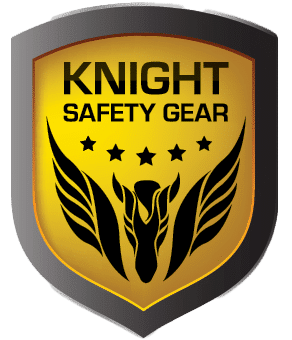NATURAL GLOVE MATERIALS
BAMBOO
Bamboo is natural fiber made from a herbaceous plant, it’s very soft, velvety and slightly glossy. Bamboo fiber has anti-microbial and antifungal properties that are retained even after numerous washings. Those anti-microbial properties reduce or remove the unpleasant odours that can develop when wearing other gloves. Bamboo is an ecologically sound crop, no pesticides are used in its cultivation and Bamboo fiber can absorb moisture 3-4 times faster than cotton and it dries twice as fast. This amazing natural fiber is nonirritant to the skin so Bamboo gloves are an essential alternative for people who suffer from allergies and sensitive skin conditions.
COTTON
Cotton (CO) is a plant that is usually processed to yarn, suitable for soft, air permeable textile production. Woven or knitted cotton textile features great moisture absorption, it is easy to wash; it does not acquire electric charge and does not change its features for up to 150°C. Thus it is perfectly suitable for clothing that is in direct contact with the skin. The recommended washing temperature of cotton textile is up to 60°C. Cotton is often mixed with different yarns, especially polyester and polyamide. These synthetic fibers ensure durability of the fabric. The cotton fiber is not elastic, thus it is often mixed with elastane.
LATEX
Latex is elastic and highly durable material that is made of rubber tree sap. Rubber is elastic because of its macromolecules form spirals. The molecules elongate when stretched and coil into spirals when released. This specific feature enables latex to adapt naturally to different hand shapes. It is very elastic (elongations limit 750 %) and has long life span.
Latex provides good protection against majority of alkaline products and detergents. Latex is very durable, tear resistant but it can be punctured with sharp objects. The major drawback of latex is its composition that contains proteins and chemical allergens.
LEATHER
Leather is durable, pliable and supple and has exceptionally good breathable properties. Furthermore, it has the ability to absorb moisture, which means a leather glove rarely feels moist, but is instead dry and comfortable.
To soften the leather, Chromium is added during the tanning process. This can cause allergic reactions in certain individuals. An upper limit is therefore specified for Chromium (VI) content in leather gloves. EN 420 specifies this limit as max. 3 mg/kg Chromium (VI).
[row]
[col span=”8″ span__sm=”12″]
SPLIT AND GRAIN LEATHER – WHAT’S THE DIFFERENCE?
The properties of hide/skin varies, depending on which part of the animal the hide/skin comes from. Hide/skin from the sides has the highest durability. Hide/skin from the shoulders is also durable, but less than side split leather.
[/col]
[col span=”4″ span__sm=”12″]
[ux_image id=”2286″ width=”72″]
[/col]
[/row]
GRAIN/NAPPA LEATHER
Grain/nappa leatheris made from the smooth surface of the hide/skin and is durable, supple, sensitive and moisture absorbing. It therefore makes an excellent choice for e.g. assembly gloves, where the re quirements to dexterity are high.
[row]
[col span=”8″ span__sm=”12″]
SPLIT/SUEDE LEATHER
Split/suede leather has a rougher surface than grain leather. It comes in a number of thicknesses and is heat resistant. For this reason, split leather is highly suitable for work gloves designed for rough handling or for welding gloves, which must withstand high temperatures and sparks.
[/col]
[col span=”4″ span__sm=”12″]
[ux_image id=”2288″ width=”72″]
[/col]
[/row]
[row]
[col span=”8″ span__sm=”12″]
GOATSKIN
This leather features detailed and embossed grain appearance, i.e. beautiful natural leather surface pattern. Goatskin is distinguished by its suppleness, low thickness and relatively high durability. The grain layer of some leather types is slightly polished and acquires a beautiful appearance while being lightweight and elastic.
[/col]
[col span=”4″ span__sm=”12″]
[ux_image id=”2290″ width=”72″]
[/col]
[/row]
[row]
[col span=”8″ span__sm=”12″]
PIG GRAIN
Pig grain is leather differing from the other types. Its grain layer features random relatively big bristle pores, creasing and slightly rough grain pattern.
As bristles grow from relatively deep layers, thus pig grain has little channels throughout its whole length and they increase water permeability and maceration. The leather thickness is slightly uneven. This leather features low wearing, relatively high durability but low elasticity.
[/col]
[col span=”4″ span__sm=”12″]
[ux_image id=”2291″ width=”72″]
[/col]
[/row]
[row]
[col span=”8″ span__sm=”12″]
COW GRAIN
Cow grain leather features good appearance, suppleness, tender and even surface, fine grain pattern and relatively even thickness within the whole area.
Cow grain leather is very strong. The cow leather differs from the calf leather by its grain pattern which is slightly rougher, it features greater thickness and rigidity. Cow grain features lower water permeability and maceration if compared to pig grain.
[/col]
[col span=”4″ span__sm=”12″]
[ux_image id=”2289″ width=”72″]
[/col]
[/row]
COW SPLIT
Cow split is leather with a fluffy surface. The fluffiness is achieved by polishing the inner surface. Due to the polishing the cow split leather is less durable than cow grain. However cow split leather features an even layer of thickness throughout the whole area.
Cow split leather is soft, supple and tender and it has good physical and mechanical properties. Cow split surface has small funnel-like bristle pores that are almost invisible as they are covered by longer fuzz. Cow split leather features significantly lower water permeability and maceration if compared to pig split.
Should you have any questions regarding glove materials, contact a Knight Safety Gear Glove Expert here: enquiries@knightsafetygear.com

















